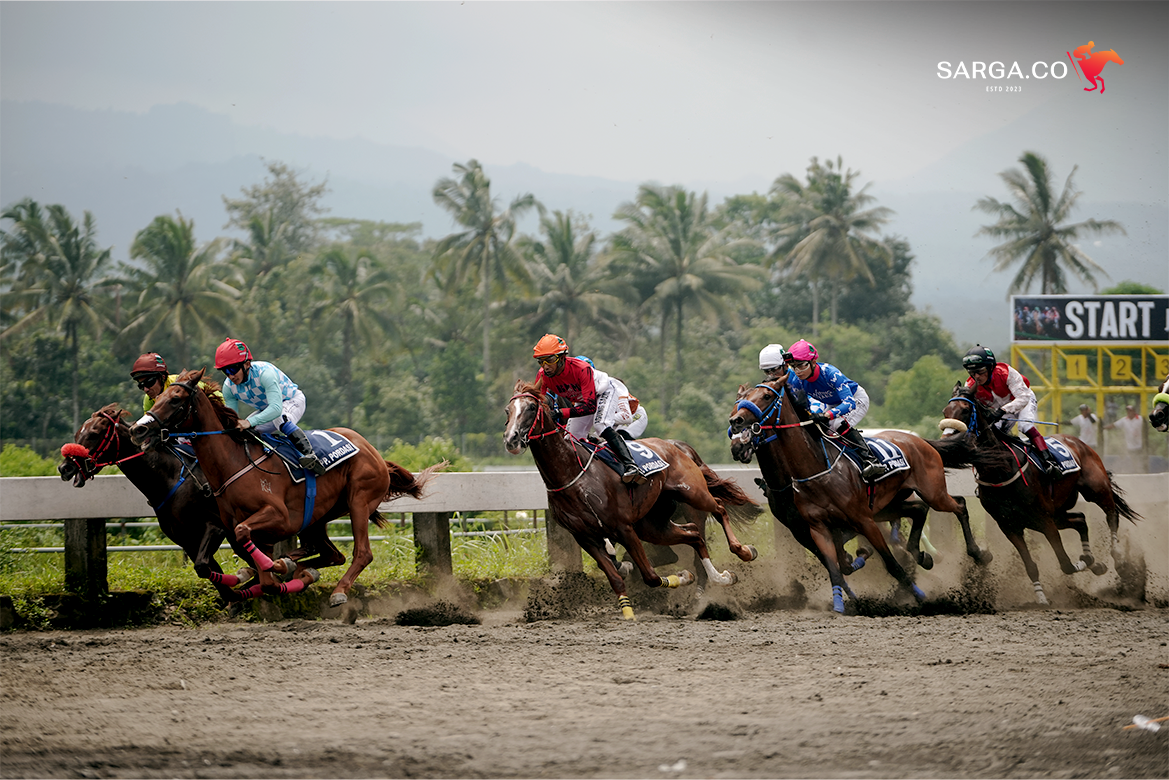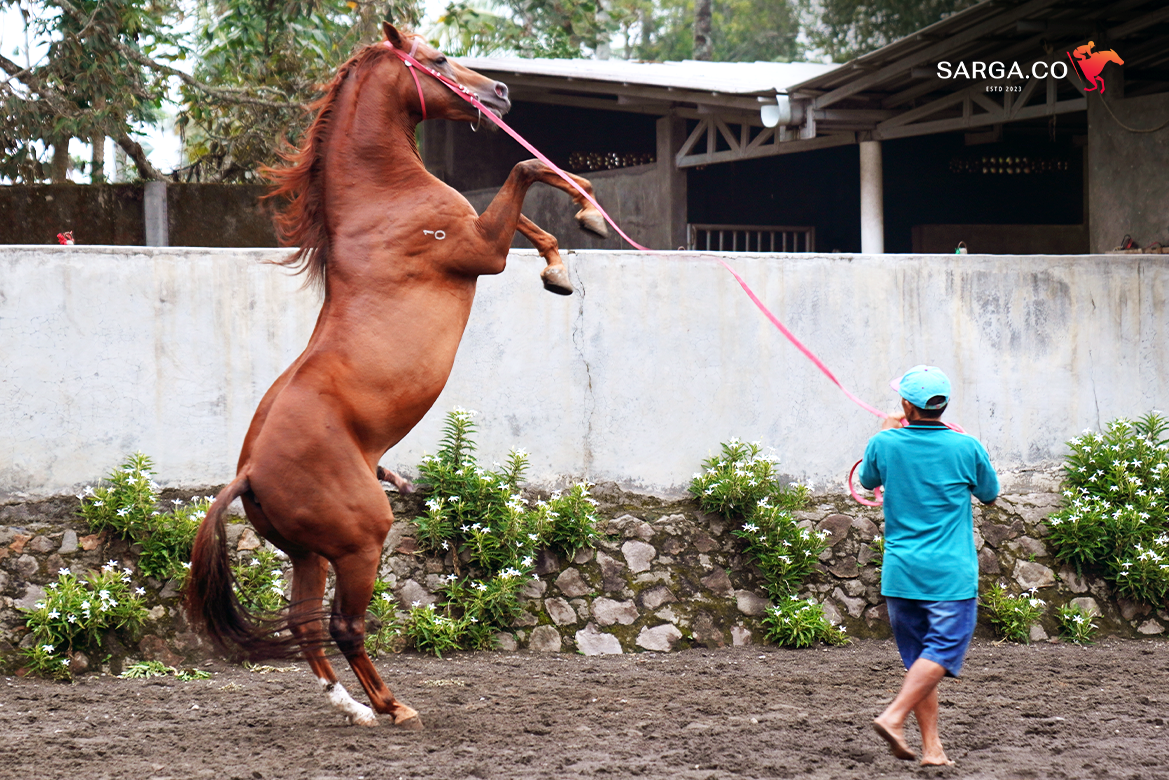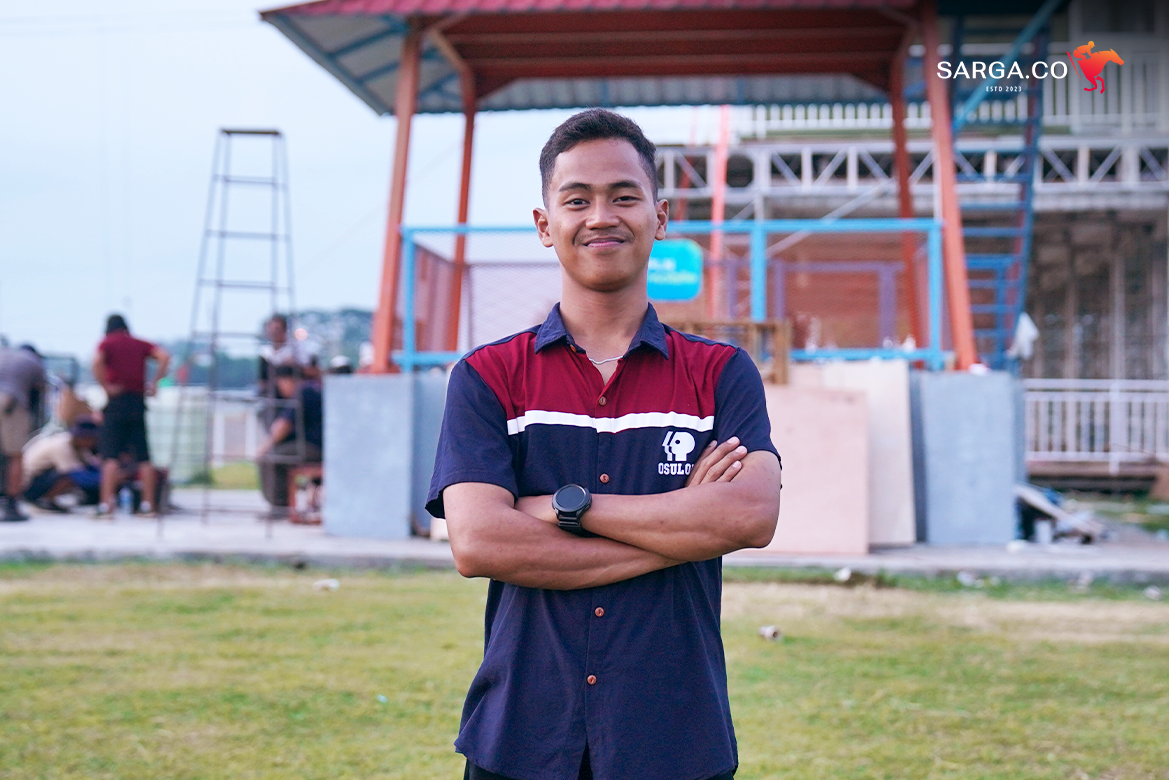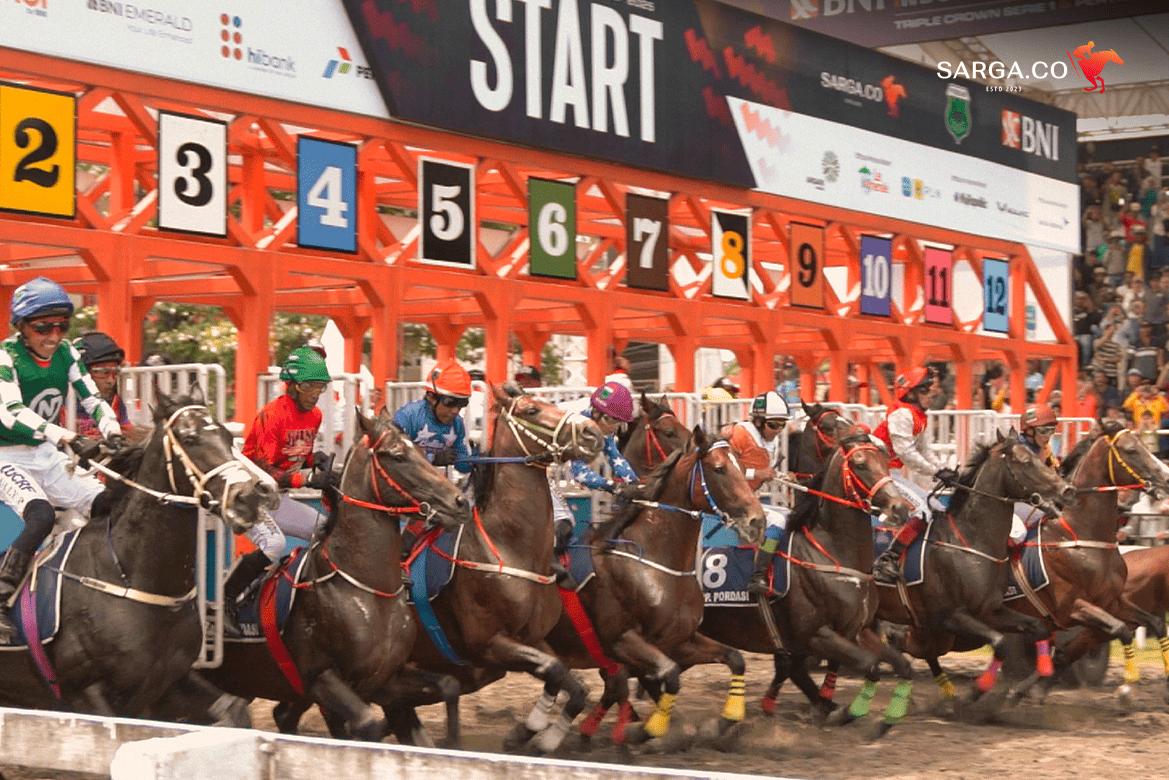SARGA.CO—Behind the power and speed of a racehorse lies a series of training stages that begin while the horse is still very young. This training isn’t just about teaching the horse to run fast — it’s about shaping it into a true physical and mental athlete.
Early training for racehorses
The very first stage in a racehorse’s life begins with something simple: socialization. The foal is gradually introduced to human interaction in the first few months after birth.
It learns to trust human touch, becomes familiar with surrounding sounds, and adapts to basic routines such as grooming and care. This early stage forms a critical foundation—when a horse feels safe and comfortable from the start, it is much easier to guide and train it as it matures.
Training guides such as those from the University of Minnesota Extension and Equine Guelph Canada recommend this early approach. Both emphasize the importance of early bonding in character development.
Once weaning is complete, training begins with basic commands. This includes getting used to a halter and lead rope, learning to walk alongside a trainer, and becoming familiar with more complex environments.
At this age, the horse is also trained not to be easily startled — especially by sudden sounds or movements. The goal is to build early discipline and establish mutual trust between the horse and its handler.
Routine training before the racetrack

Racehorses are training in the paddock
Source: SARGA.CO
Once a horse reaches one to two years of age, it begins light physical training. This includes walking or trotting in paddocks, getting used to wearing a saddle (without a jockey), and starting to strengthen its main muscle groups.
As stated in a 2014 study by Welsch et al., titled “Estimates of Genetic Parameters of Distal Limb Fracture and Superficial Digital Flexor Tendon Injury in UK Thoroughbred Racehorses,” regular training routines are crucial before a horse is ready to hit the track. These routines typically include three movements: walk, trot, and canter.
In a 2021 study by C. Singal et al., “Training Patterns of Racehorses in Pinabetengan and South Pinabetengan Villages, Tompaso Barat District,” walking is described as a basic four-beat gait, averaging about seven kilometers per hour, with the horse alternating between placing two to three feet on the ground.
Trot is a two-beat diagonal gait involving pairs of opposite legs. Its purpose is to strengthen the heart and improve the efficiency of the lungs and diaphragm. This is further supported by insights from Hammer and Champy’s (1993) publication A Manifesto For Business Revolution.
Canter training, on the other hand, is used to build muscle strength. This asymmetrical movement activates different muscle groups depending on whether it’s a left or right lead canter.
At this stage, trainers observe each horse’s natural potential — whether it shows efficient running form, promising stamina, or quick responsiveness to commands. Still, training volume must be carefully managed to avoid putting too much strain on bones and joints that are still developing.
Transitioning to competition
Between the ages of two and three, horses enter a transitional phase as they prepare to compete. They begin training on real racetracks, encountering other horses, and being introduced to start gates — along with the pressure and adrenaline of racing.
They learn to build rhythm while running, respond to jockey instructions through body pressure, and adapt to more complex environments such as crowd noise or the sound of other horses nearby. This is a challenging stage for many horses, requiring high mental adjustment.
Not all horses that appear physically ready are mentally stable. Some require additional time to build confidence and composure before being genuinely race-ready.
Before entering an official race, horses typically go through several trial runs and simulations. These mock races mimic real conditions, including the use of starting gates, race whistles, and other competitors.
During this phase, trainers and jockeys assess the horse’s readiness — evaluating acceleration, self-control, and responsiveness during high-stress moments. It is also a key opportunity to build chemistry between the horse and its jockey, a relationship that can significantly impact performance on race day.
The long road to the finish line

Racehorses
Source: SARGA.CO
Training a racehorse is a delicate blend of science, instinct, and art. It requires patience, empathy, and dedication from everyone involved — from trainers and breeders to jockeys and caretakers.
Each horse has its unique character. Not every fast horse is instantly a champion. Some take longer to build courage, while others may need to be retrained after experiencing trauma.
So, when a racehorse finally sprints down the track, capturing the attention of thousands with its strength and grace, we’re not just witnessing a moment of speed — we’re seeing the result of a long journey that began in its earliest days, one careful step at a time.




